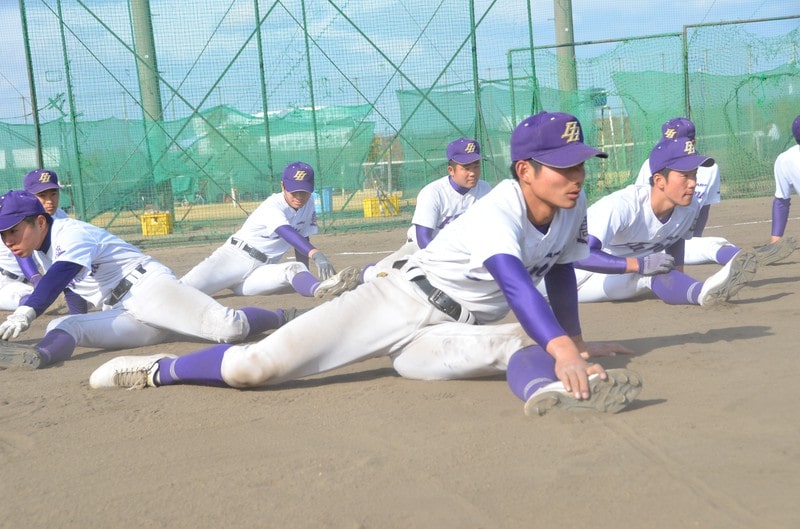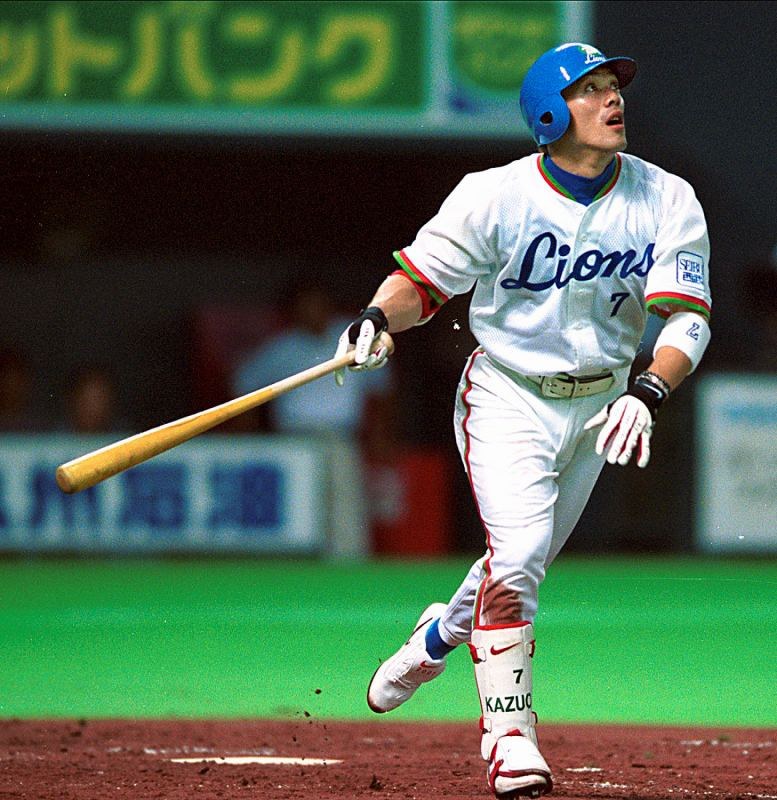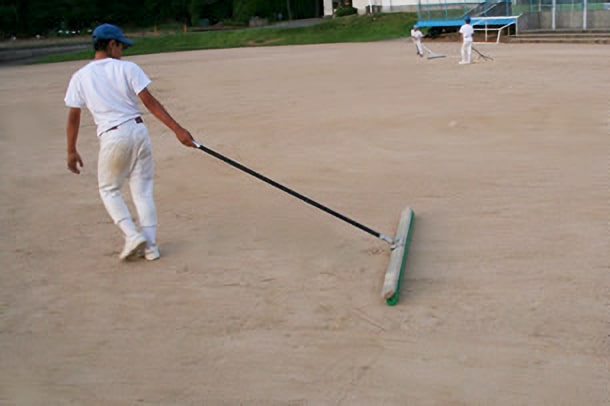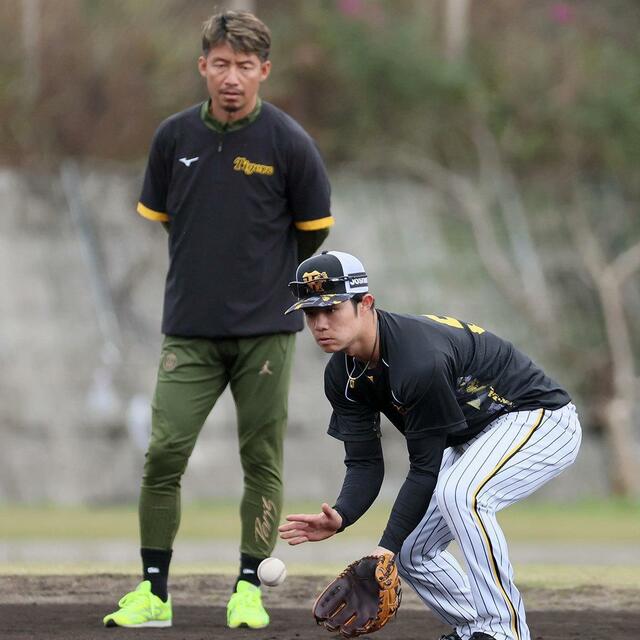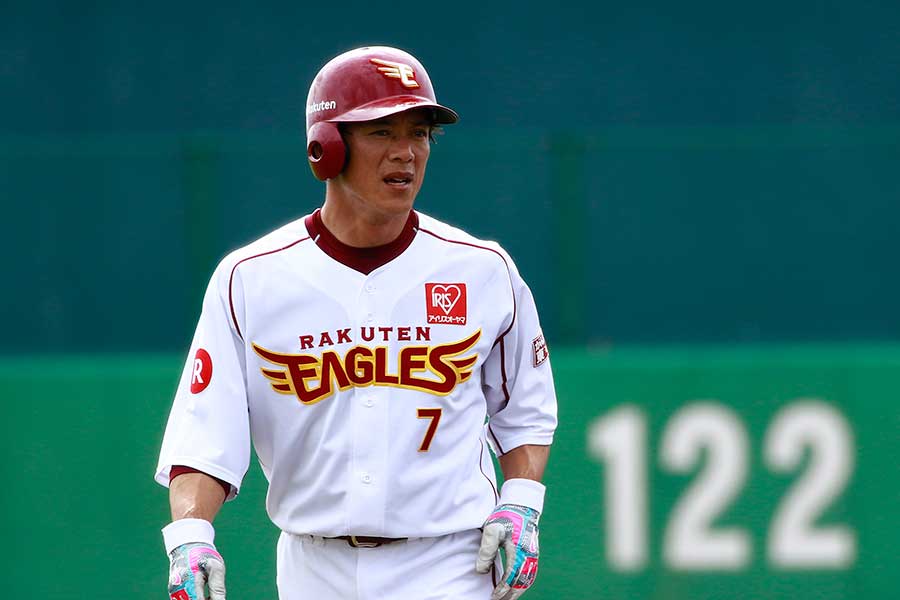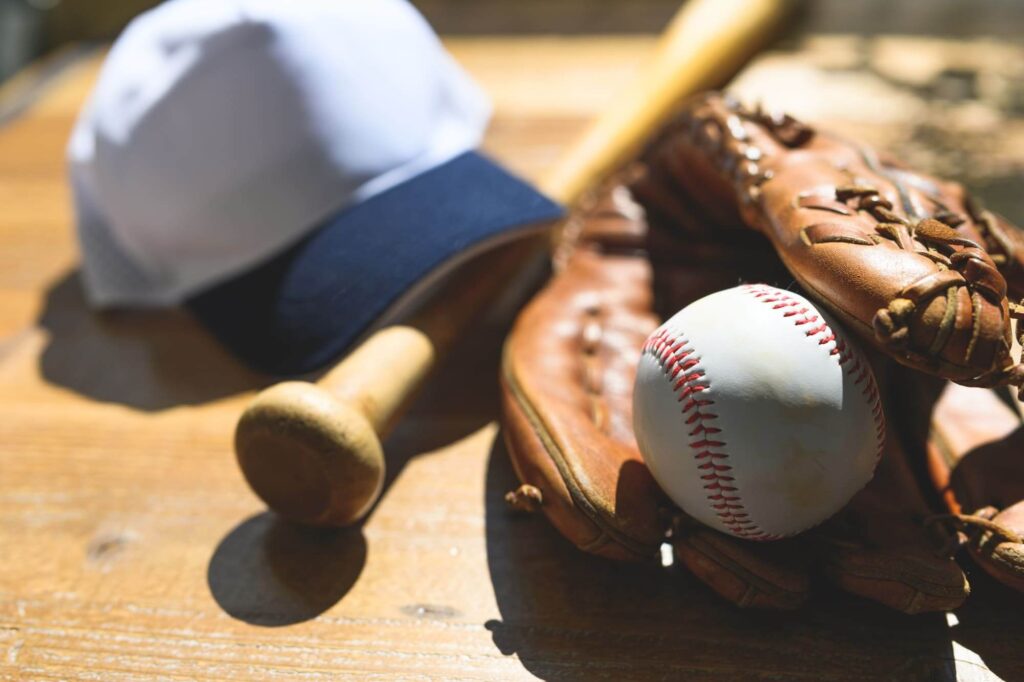
Baseball is one of the most popular sports for junior high school students in Japan, so proper field dimensions and design are important.
A pitch with the correct dimensions provides a fair and enjoyable playing environment and helps players improve their skills.
This article provides detailed information regarding the dimensions and design of junior high school baseball fields.
We hope this will be helpful when designing your ground.
目次
Basic dimensions of a baseball field
The dimensions of a baseball field vary depending on the level and age of the players.
A middle school baseball field is one of them, and understanding the exact dimensions is crucial to providing a proper playing environment.
Here we will explain in detail the standard size of junior high school grounds and the specific dimensions of each part.
Standard size of junior high school grounds
Junior high school baseball fields are designed to be slightly smaller than professional and high school baseball fields.
This is tailored to the physical strength and skill levels of junior high school students.
Below are the standard dimensions of junior high school fields:
Diamond Size: The standard size for a junior high school diamond is approximately 90 feet (27.43 meters) between the bases. This distance is the same as professional and high school baseball and provides a suitable playing environment.
Distance from home plate to the fence: The distance from home plate to the center field fence is approximately 300 feet (91.44 meters). The distance to the left and right field lines is approximately 250 feet (76.2 meters). This creates a balanced field that provides a good challenge for both hitters and defenses.
Specific dimensions of each part of the ground
Each part of the ground has specific dimensions and setting these accurately ensures a fair playing field.
Here are the main dimensions:
Infield Diamond: The infield diamond is a square with 27.43 metres (90 feet) between each base. The bases are each approximately 38 centimetres (15 inches) on a side. These dimensions allow for smooth movement of runners and defenses and ensure fair play.
Pitcher’s mound: The pitcher’s mound is approximately 15.24 centimetres (6 inches) high and 5.49 metres (18 feet) in diameter. The centre of the pitcher’s mound is located approximately 18.44 metres (60 feet 6 inches) from home plate. These dimensions allow the pitcher to deliver the ball effectively and provide an adequate challenge to the batter.
Batter’s and catcher’s boxes: The batter’s box measures 4 feet (1.22 meters) wide and 6 feet (1.83 meters) long. It is located on either side of home plate and is approximately 6 inches (15.24 centimeters) from home plate. The catcher’s box measures 10 feet (3.05 meters) wide and 8 feet (2.44 meters) long.
Outfield fences: The standard distance for outfield fences is about 300 feet (91.44 meters) in center field and 250 feet (76.2 meters) at the field lines. Fences are usually about 8 feet (2.44 meters) high. These dimensions allow for fair play for home runs and extra base hits.
Dugouts and seating: The standard size of a dugout is 25 feet (7.62 meters) wide and 8 feet (2.44 meters) deep. Dugouts are located on the first and third base sides, allowing players to watch the game while resting on the bench. The seating arrangement is set up around the perimeter of the field, allowing spectators to watch the game comfortably.
By accurately understanding these dimensions and making appropriate designs, we can provide the perfect baseball field for junior high school students.
Correct dimensions and design are essential to player development and a safe playing environment.

Pitcher’s mound design
The pitcher’s mound is an important area in a baseball game where the pitcher delivers the ball.
Precise design and maintenance are essential to maximizing pitcher performance and providing a safe and fair playing environment.
Here we will explain in detail the height and diameter of a pitcher’s mound, as well as how to build and maintain it.
Pitcher’s mound height and diameter
The dimensions of the pitcher’s mound are strictly set according to official rules.
Standard heights and diameters for middle school pitcher’s mounds are as follows:
Height: The height of a middle school pitcher’s mound is approximately 6 inches. This height is lower than professional and high school pitches. It is designed to give the pitcher more stability and balance when throwing the ball.
Diameter: The diameter of the pitcher’s mound is approximately 5.49 metres (18 feet). The centre of the mound is approximately 18.44 metres (60 feet 6 inches) from home plate and is precisely positioned to allow the pitcher to deliver the ball from a suitable distance and to keep the batter in balance.
How to build and maintain a pitcher’s mound
The construction and maintenance of a pitcher’s mound directly impacts the quality of the field and the pitcher’s performance.
Below we will introduce how to build a pitcher’s mound and some key points for maintaining it.
1. Set the baseline: Measure exactly where the pitcher’s mound will be and position it along the baseline. Ensure that the distance from home plate to the center of the pitcher’s mound is 18.44 meters (60 feet, 6 inches).
2. Creating the Foundation: The foundation for a pitcher’s mound is made of tightly packed earth. First, the area for the mound is excavated and then piled up to the required height. It is important that each layer of soil is packed tightly. If the foundation is not solid, the mound may collapse during use.
3. Leveling the surface: Once the foundation is complete, the surface of the mound is leveled and leveled. The soil surface should be smooth and of uniform height. In particular, the area where the pitcher steps and throws the ball should be firmly packed.
4. Setting up the rubber plate: A pitcher’s plate (rubber plate) is placed in the center of the pitcher’s mound. The size of the rubber plate is about 15.24 centimeters (6 inches) wide and about 61 centimeters (24 inches) long. The rubber plate should be firmly fixed in place so that the pitcher can step on it stably.
5. Maintenance: Pitcher’s mounds require regular maintenance. After use, the surface of the mound should be leveled and any footprints or diggings repaired. It is also important to water the mound as needed to maintain an appropriate level of moisture and to harden the surface. In the off-season, the mound is thoroughly repaired in preparation for the next season.
6. Seasonal maintenance: Adjust the maintenance method of the mound according to the seasonal weather conditions. For example, in summer, it is easy to dry out, so water it frequently to keep the soil moist. On the other hand, in winter, it is recommended to provide a suitable cover to prevent damage from freezing and rain.
Proper design and maintenance of the pitcher’s mound is critical to maximizing pitcher performance and ensuring the fairness of the game.
By precisely adhering to the height and diameter and performing regular maintenance, we can provide a high-quality playing environment.
Keep your junior high school baseball field in top condition by paying attention to proper construction and regular maintenance.
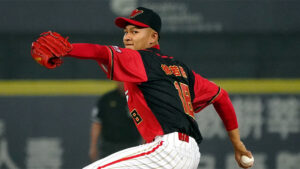
Distance and placement between bases
The distance and placement of bases on a baseball field directly affects the progress of the game and the performance of the players.
Proper distancing and placement is important, especially on baseball fields for middle school students.
Here we will explain in detail the distance from first base to third base, and the distance from home base to each base.
Distance from first base to third base
The distance from first base to third base is on the diagonal of the diamond.
This distance is an important factor in infield play, greatly affecting the timing of players’ base running and defense.
Distance Calculation: The distance from first base to third base is calculated using the following formula:
In junior high school baseball fields, the distance between bases is set at 27.43 meters (90 feet). Applying this to the formula,
This distance is set taking into account the infielders’ defensive range and the runners’ running distance.
Distance from home base to each base
The distance from home base to each base is precisely set to ensure an accurate playing field.
Below we explain in detail the distance from home base to first base, second base, and third base.
Distance from home base to first base: The distance from home base to first base is 27.43 meters (90 feet). This distance is the standard distance a batter must reach from the plate to first base. The distance to first base is an important factor in measuring the batter’s speed and the first baseman’s defensive ability.
Distance from home base to second base: The distance from home base to second base is located on the diagonal of the diamond. This distance, like the distance from first base to third base, is about 38.81 meters (127 feet 3 3/8 inches). This distance affects the chances of stealing second base or attempting a double play.
Distance from home base to third base: The distance from home base to third base is also 27.43 metres (90 feet). The distance to third base is the same as the distance to return home, and is an important factor in situations such as triples and squeeze plays.
Base placement and importance
Accurate Base Placement: The placement of the bases is crucial to forming an accurate diamond. The precise location of each base ensures fair play and maximizes player performance.
Infield Diamond: The infield diamond is laid out to form a precise rectangle, with home plate at the base and first, second and third bases placed exactly the same distance apart to complete the diamond. This layout optimizes infield coverage and running lanes.
Base size and material: Each base is square in size, measuring approximately 38 centimetres (15 inches) on a side. Bases are typically made from durable materials and are securely fastened together to ensure the safety of players. They are designed to prevent the base from moving, especially in slippery conditions.
Maintaining Baselines: Baselines are the exact straight lines between the bases that act as guidelines for runners to follow. Baselines are regularly chalked and maintained so that they are clearly visible during the game. This allows for smooth movement of runners and defense.
Accurate base distance and placement plays a vital role in the game of baseball.
Proper design and layout, especially on middle school fields, is essential to player development and ensure a safe playing environment.
By understanding the proper dimensions and placement and designing accurately, you can provide a quality baseball experience.

Outfield fence placement and height
The outfield fence is one of the most important elements in the design of a baseball field.
The placement and height of the fences directly impacts the progression of the game and the performance of the players.
Proper placement and height are important for middle school playgrounds.
Here we will explain in detail the standard distance and height of fences, as well as points to take into consideration when designing.
Standard fence distance and height
The distance and height of the outfield fences are set according to the age and level of the players.
The following standard distances and heights are recommended for junior high school playing fields:
Fence Distance: On a junior high baseball field, the distance from home plate to the center field fence is approximately 300 feet (91.44 meters). The distance to the left and right field lines is approximately 250 feet (76.2 meters). This distance is both challenging for batters and appropriate for outfielders to play effectively.
Fence height: The standard height for an outfield fence is approximately 2.44 metres (8 ft). This height is sufficient to prevent home runs and extra base hits while at the same time providing an adequate challenge for outfielders to catch balls that go over the fence.
Points to consider when designing a fence
There are a few important things to consider when designing an outfield fence.
Taking these precautions into account will help provide a safe and effective playing environment.
Material Selection: The material used for the fence must be durable and keep the players safe. Metal fences are the most common, but plastic and wood are also used. All materials are designed to be impact resistant and prevent players from being injured if they collide with the fence.
Ensuring visibility: Fences are also an important element for spectators watching the game. In order to make it easier for spectators to see the game, attention should also be paid to the design and coloring of the fence. Installing transparent panels on the top of the fence can increase visibility.
Fence stability: Outfield fences should be designed to withstand wind, rain, and other weather conditions. It is important to design the fence with a sturdy base that will not collapse in high winds. Regular inspection and maintenance are also required to maintain the fence’s stability.
Establishing a safety area: It is recommended to establish a safety area around the fence. In particular, to prevent injury to players in the event of a collision with the fence, it is effective to install soft padding in front of the fence. This will cushion the impact of the collision.
Adjusting the fence height: The height of the fence can be adjusted according to the overall design of the ground and the environmental conditions. For example, in areas where strong winds occur frequently, the fence height can be lowered to reduce the impact of the wind. On the other hand, if home runs occur frequently, it may be considered to increase the fence height to prevent them.
Consideration of the environment: When installing a fence, you must also consider the surrounding environment. For example, you must take noise control measures and consider the scenery so that the installation of the fence does not affect the surrounding residents. In addition, you must pay attention to the location of the fence and the selection of materials to protect the natural environment.
The placement and height of the outfield fence is a very important factor in the design of a baseball field.
By setting precise distances and heights, and choosing the right materials and design, you can provide a safe and effective play environment.
In addition, regular maintenance and consideration for the environment will enable the facility to remain in good condition for a long period of time.
Through proper fence design and maintenance, you can make the baseball experience for middle school students richer and safer.

Batter’s box and catcher’s box
The batter’s box and catcher’s box are important areas in the game of baseball.
These areas are designed to allow for precise positioning of the batter and catcher.
Here we will explain in detail the dimensions and placement of the batter’s box, as well as the role and design of the catcher’s box.
Batter’s box dimensions and placement
The batter’s box is the area where the batter stands to hit the ball.
The exact dimensions and placement impact the batsman’s performance and the fairness of the match.
Batter’s box dimensions: The standard dimensions of a batter’s box are 1.22 metres (4 ft) wide and 1.83 metres (6 ft) long. This area is located on either side of home plate and is designed to allow the batter to hit the ball in the proper position.
Batter’s box placement: The batter’s box is placed symmetrically around home plate. The distance from the front of home plate to the inside edge of the batter’s box is approximately 15.24 centimeters (6 inches). This placement allows the batter to see and swing at the ball from a proper position.
Importance of the batter’s box: The dimensions and placement of the batter’s box directly affect the batter’s vision and the timing of his swing. By observing the correct placement and dimensions, the batter can easily catch the ball in the best position, and the game is kept fair. In addition, the boundaries of the batter’s box are clearly delineated, and the batter is expected to play within them.
Batter’s box maintenance: Before and during the game, the batter’s box boundaries must be re-lined periodically to prevent them from disappearing. Proper maintenance is especially important in rainy weather or after many players have used the box, as the lines are more likely to disappear.
The role and design of the catcher’s box
The catcher’s box is the area where the catcher receives the pitch.
Precise design and placement can have a huge impact on a catcher’s performance and the progression of the game.
Catcher’s box dimensions: The standard dimensions of a catcher’s box are approximately 3.05 meters (10 feet) wide and 2.44 meters (8 feet) long. This area is located behind home plate and provides the catcher with room to move freely and receive pitches.
Catcher’s box placement: The catcher’s box is designed to be located just behind home plate, at an appropriate distance from the plate. The catcher is in this box to receive pitches, call leads, and make movements to prevent base stealing.
The importance of the catcher’s box: The dimensions and placement of the catcher’s box directly impact the catcher’s mobility and safety. Proper spacing allows the catcher to receive the ball effectively and react quickly. Also, clarity of boundaries is important because penalties may be assessed against the batter and umpires if the catcher steps outside the box.
Catcher’s box maintenance: The catcher’s box also requires regular maintenance to keep the lines from disappearing during the game, especially since there is a lot of movement and the lines tend to wear off quickly. Properly re-drawing the lines will help the game proceed smoothly.
The dimensions and placement of the batter’s box and catcher’s box are very important factors in the game of baseball.
Through precise design and regular maintenance, we can maximize batter and catcher performance and provide a fair and safe playing environment.
Even on junior high school baseball fields, maintaining the exact dimensions and layout of these areas will ensure quality game management.
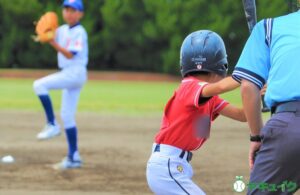
Dugout and seating arrangement
The placement of dugouts and spectator seats in a baseball stadium has a significant impact on the progress of the game and the comfort of spectators.
Through precise design and placement, we can maximize the performance of athletes and provide a comfortable viewing environment for spectators.
This article goes into detail about standard dugout sizes and placements, as well as seating arrangements and comfort considerations.
Standard dugout size and placement
The dugout is a vital area where players wait during a match and watch the progress of the game.
Precise design is required as proper size and placement impacts player performance.
Standard Size: The standard size for a dugout is 25 feet wide by 8 feet deep. This space provides the bench and standing space for players and coaches to be comfortable, plus room for players to place their equipment.
Location: Dugouts are located on the first and third base sides. This is to allow players from each team to watch the game close to the field and to quickly enter and exit the field. A fence is installed in front of the dugouts to ensure the safety of players and to ensure visibility.
Functionality and comfort: The dugout needs to be equipped with facilities that take into consideration the comfort of the players. The benches should be designed and made of materials that make it easy to sit on for long periods of time, and there should be space to place drinks and towels. It is also important to provide adequate ventilation and shade to combat the summer heat.
Ensuring safety: Safety is an important factor in dugout design. Fences and netting can be installed to protect players from flying balls, and dugout floors are made of non-slip materials to reduce the risk of injury.
Seating arrangement and comfort considerations
The seating arrangement has a significant impact on whether spectators can watch the game comfortably.
Ensuring visibility, comfortable seating, and proper accessibility are some of the factors that can help ensure a high level of spectator satisfaction.
Ensuring visibility: The seats will be positioned to provide a full view of the field. The inclination angle of the stands will be set appropriately to ensure that the heads of spectators in the front do not obstruct the view. In addition, the seats will be positioned to provide a good view of home plate and the pitcher’s mound, so that spectators do not miss important moments of the game.
Comfortable seats: The comfort of the seats is directly related to the satisfaction of the spectators. By installing cushioned seats and seats with backrests, spectators will not get tired even during long periods of watching. In addition, we will provide ample space between seats to allow spectators to move freely.
Proper access: It is important that access to the spectator seats is smooth. We will provide sufficient aisles and stairs, and design the venue so that spectators can move comfortably to their seats. We will also provide a barrier-free environment so that wheelchair users and the elderly can watch the game in peace of mind.
Shade and weather protection: Some of the spectator seats will be covered with roofs or shade to provide shade. This will improve spectator comfort, especially during summer games, by protecting them from direct sunlight. Measures to protect against wind and rain are also important.
Facilities and services: To improve the comfort of spectators, we will improve facilities such as toilets, concession stands, and rest areas. It is especially important to install multiple toilets in places that are easily accessible to spectators. In addition, concession stands will provide drinks and snacks so that spectators can stay comfortable during the game.
Spectator safety measures: Safety measures are also important when designing spectator seats. In particular, fences and nets are installed to protect spectators from flying balls. It is also necessary to secure evacuation routes in case of an emergency and prepare for the worst case scenario.
Dugout and seating arrangements are very important elements in baseball park design.
Appropriate size, layout and attention to detail are required to provide a comfortable and safe environment for both players and spectators.
This allows the match to proceed smoothly and spectators to enjoy the match to the fullest.

Grounds maintenance and improvement
The provision and maintenance of baseball fields is crucial to maximizing player performance and providing a safe and fair playing environment.
Here we will explain in detail how to maintain the grounds on a daily basis and for each season.
Daily maintenance methods
Grounds maintenance is an important task that should be carried out on a daily basis.
Proper maintenance will help maintain the quality of the field and prevent injuries to players.
Lawn care: The grass takes up a large part of the baseball field, so it needs to be properly cared for. Daily watering is essential to keep the grass healthy. Providing adequate moisture is important, especially during dry seasons. Regular mowing to keep the grass at a uniform height also helps the ball roll smoothly.
Soil maintenance: The infield soil requires daily maintenance. After each game or practice, a ground rake is used to level the surface and remove any unevenness. It is also important to sprinkle water appropriately to prevent the soil from hardening. In particular, the soil around the pitcher’s mound and batter’s box needs to be maintained frequently.
Check the base and lines: It is important to check the position of the base and lines every time to make sure they are not misaligned. Check that the base is firmly fixed and the lines are clearly drawn, and correct them if necessary. This will ensure fair play.
Cleaning up trash: We maintain a clean environment by cleaning up trash on and around the field every day. In particular, the spectator seats and areas around the dugouts are prone to littering after use. Thorough cleaning provides a comfortable environment for players and spectators.
Seasonal grounds management
Grounds management changes with each season to accommodate different environmental conditions.
By performing maintenance appropriate for each season, the quality of the grounds can be maintained throughout the year.
Spring: Spring marks the start of a new season and it’s important to prepare the ground, clearing away leaves and debris that have accumulated over the winter, sowing grass seed to encourage new growth and aerating the soil to improve its breathability.
Summer: Summer is a season when grass and soil tend to dry out. Be sure to water the grass every day to prevent it from drying out. It is especially effective to water the grass twice a day, in the morning and in the evening, on extremely hot days. Summer is also a time when weeds tend to grow, so regular weeding is also essential.
Fall: Fall is the time to repair and strengthen the grounds. After the season ends, the grass is repaired and the soil is replenished. Areas that have been used a lot (such as the pitcher’s mound and batter’s box) are especially well restored and prepared for the next season. Fall also brings with it a lot of fallen leaves, so regular cleaning is necessary.
Winter: Winter is the season when the grounds are exposed to freezing and frost. To protect the grass, use winter sheets as necessary. Also, if snow accumulates, remove it promptly to keep the grounds in a usable condition. By resting the grounds during the winter, they will be better prepared to grow a healthy lawn in the spring.
Annual planning: It is important to plan the preparation and maintenance of your grounds throughout the year. From pre-season preparation, to in-season maintenance and end-of-season repairs, we schedule a series of tasks to ensure that we can provide a consistently high quality ground.
Through thorough daily maintenance and seasonal management, we can maintain the quality of our baseball fields and maximize player performance.
Proper maintenance and management will provide a safe and comfortable playing environment and enable matches to be run to a high standard throughout the year.
